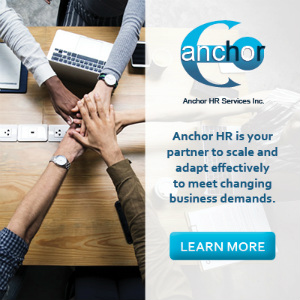
For a customer-focused culture, make collaboration unavoidable
We all want an organization that’s agile and has an established customer-focused culture. A workplace where all employees feel supported with a laser focus on improving the customer experience.
Certainly, “it all starts at the top” so we should focus on investments in leadership development. Yet top heavy investments often stall in the middle, with limited impact on the front line. The challenge is that executive-level initiatives often do not do much to assist our middle and front line managers. Meanwhile, these managers are the key drivers of both employee and customer engagement.
“The culture reflects the realities of people working together every day.”
Frances Hesselbein, Former CEO of the Girl Scouts
We know how critical employee engagement and enablement are to drive great performance. And we know that leadership drives engagement. Yet often our investment in leadership development, per capita, is in the shape of an inverted pyramid.

If we want an agile culture, we need to instill practices that make it impossible to ignore inter-dependencies across teams
We could send executives on retreat after retreat on the importance of working collaboratively. Also, we could train managers, albeit in a less expensive one-day course. Then, we could wait for the magic to happen… or not.
Rather, we could invest in the infrastructure to ensure there is transparency around organizational performance and departmental interdependencies. In addition, ensure the leadership skills to implement these processes effectively.
Sound straightforward? Not if we are familiar with the obstacles in most organizations today, namely:
- Teams operating in silos,
- Variance in leadership abilities, and
- Subject experts holding onto key information and doling it out in bite-sized chunks to preserve their authority.
If we want to instill a customer-focused culture, what are the key differentiators for success?
In a customer-focused culture, the need for collaboration across the organization is articulated as a business imperative. Information-sharing tools and metrics are immersed in business processes, at all levels of the organization. There is a clear line of sight to the customer. And there is a structured approach for implementation and change management.
“The best leadership development doesn’t happen by just going off to a course or a seminar … The best leadership development happens when people are learning in the context of their own strategic, economic agenda, with the actual people that they are going to influence and lead.”
Roselinde Torres, Top Leadership Consultant
There are key leadership skills needed at all levels to support an agile and customer focused culture:
- Owning the Message – taking responsibility in acknowledging and responding to concerns
- Approachability – showing employees that they can candidly raise concerns without fear
- Forward-focused problem solving – defining what success looks like and promoting joint problem solving
More senior leaders may well need more advanced training. They must be effective at modeling and coaching these principles. Senior leaders must also assess risk within their units. Furthermore, it is equally important to invest in developing the ability of mid and front line leaders in these areas. This is a priority. However, leadership training is not enough to transform a culture.
Leadership skills alone are not nearly enough
The impact of leadership training will not be realized without an environment where collaboration is unavoidable. Every employee must clearly see how each role supports the customer experience.
We can add ‘collaboration’ to performance reviews. We can even provide subjective feedback at every turn. But this will only move us inches along the runway in our attempt to stay ahead of our competition. In contrast, we can meaningfully inform all levels of our organization on our performance.
This begins with identifying and sharing key outputs from the organization. This can mean readable dashboards accessible to all. It requires senior leaders to commit to effective information sharing before relying on delegation. In this way, leadership and transparency make collaboration unavoidable.
When employees are meaningfully included, their participation drives commitment and becomes a flywheel to drive innovation.


